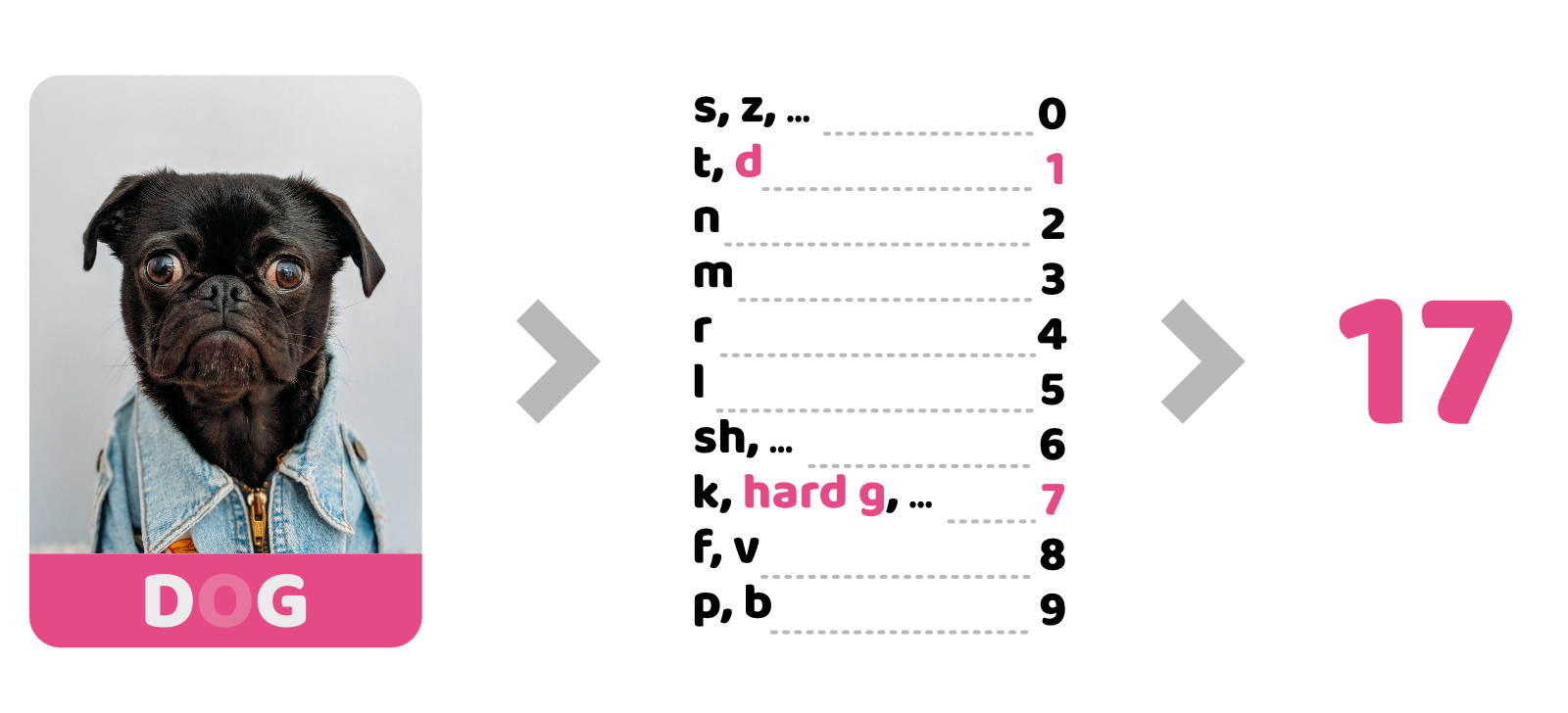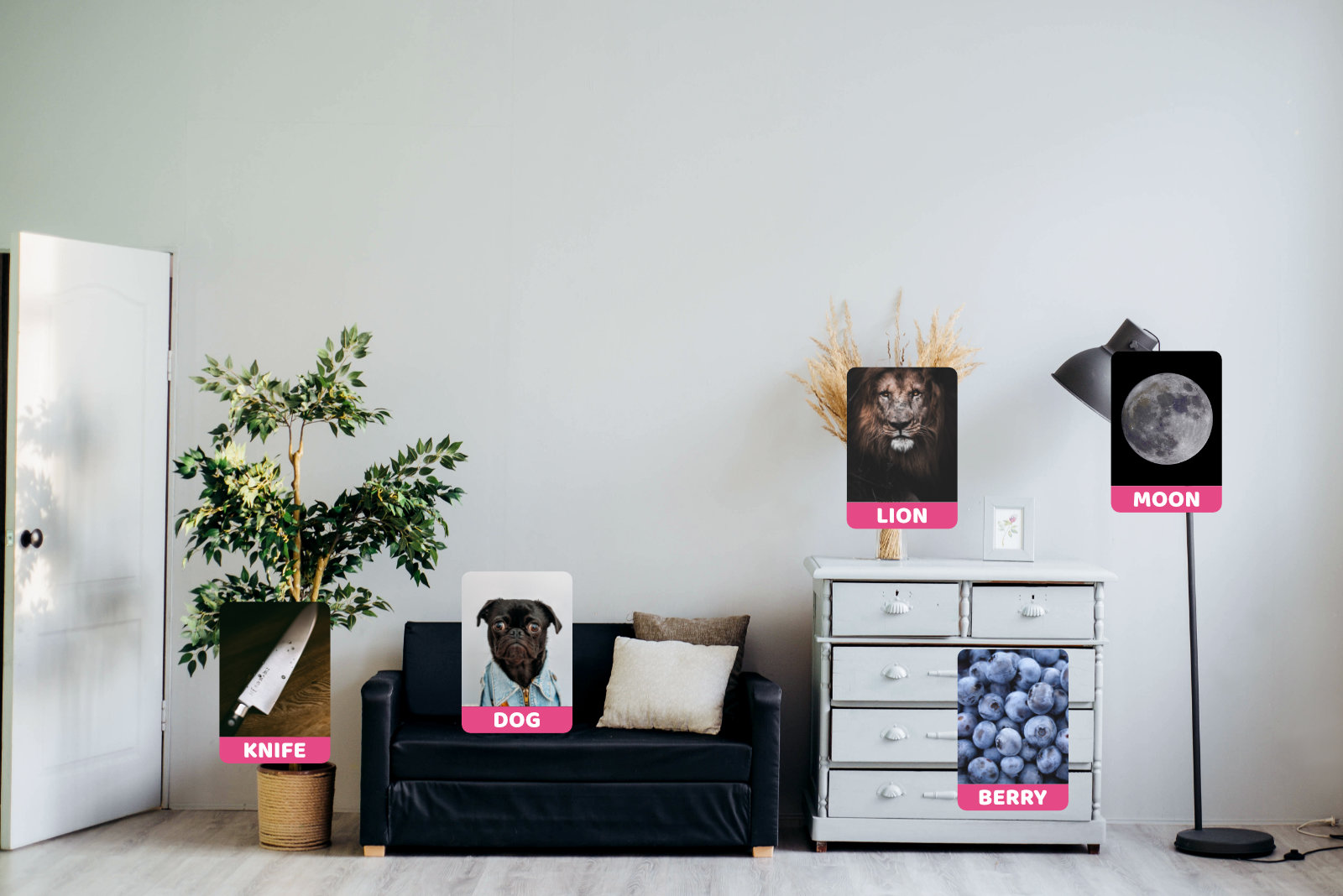Labs: Using AR to learn 14 decimals of pi
The most commonly used citation of memory capacity states that our short term memory has a limit of 7 ± 2 items, but later research has shown that 4 ± 1 is a more realistic number1. Despite this, we wanted to be able to see whether it is possible to learn 14 decimals of pi in five minutes. To assist our mission we use the same memory techniques as the memory masters do, and of course, add AR to assist our learning process even further.
Theory
The big masters of memory use certain techniques to help them remember a lot of information at the same time. Especially when it comes to remembering numbers, assisting techniques are of great value since our limited short term memory capacity sets our range.
 The major system using two digits2
The major system using two digits2
The memory techniques most commonly used when remembering numbers are the Major System in combination with a Memory Place. When using these techniques, firstly you have to create an image for every number you want to remember. This is done by converting the numbers into consonant sounds which by adding vowels form words that are represented in the images. Then you place those images in specific places in your memory place, one for each image.
Dig deeper
The theory behind the Major System and a Memory Place lie in their compatibility with how our brains like to store and recollect information in our long term memory. Our brains need to use much less energy to classify and store images than to store random (non-imagery) information and numbers.
This is due to our brain’s explicit memory system that holds information about objects, facts, concepts, and words along with their meaning. Explicit memory is built up by associations, and the more associations we gather over time and how well we organize them to each other, the more precise our knowledge gets. These associations can be accessed by different senses such as visually, verbally or by other sensory cues which are great tools to draw advantage of.
To retrieve the encoded information the most effective way is to be located in the same context as and in the presence of the same ques as where the information was acquired. When we recall explicit memories from our long term memory we use our working memory that has an attentional control system with a limited capacity of less than a dozen items.
The attentional control system regulates the information in our working memory by two rehearsal systems, the articulatory loop for language and numbers and the visuospatial sketch pad for vision and action. The articulatory loop is a rapidly decaying memory trace that is maintained by sub-vocal speech while the visuospatial sketch pad represents both the visual properties and the spatial locations of objects to be remembered and is a more stable system.
When looking at the memory techniques of the Major System and Memory Place in relation to how our memory works, it is no surprise why these techniques work so well.
Converting the information from hard to remember numbers to easy to remember images and places we hack our own brains and create a better memory capacity.
Using the Major System and a Memory Place to encode 14 decimals of pi we make use of the more stable working memory system of the visuospatial sketch pad instead of completely relying on the quickly decaying articulatory loop.
 An example of a memory place2
An example of a memory place2
Concept
We wanted to take the memory aiding systems one step further and combine them with mobile AR. In this way, we move the memory place from inside our brains into the real world, as is supported by the theory of memory retrieval. Although our memory place most commonly is a mental copy of a real place that is very familiar to us, actually moving the information into the real world helps further imprint its information footsteps.
We also have a theory regarding the additional physical movement needed to locate the memory places and its additional aid in guiding memory imprinting.
To test it out we collected photos of significant items at our office and trained an object detector using Turi Create and exported it as a Core ML model. Using this model, we then created an app that shows images based on the Major System that represents the first 14 decimals of pi when the phone is pointed at items in the correct order.
Evaluation
Two persons tried our memory lane concept for five minutes each and the day after we asked them to recall the information. Both successfully remembered all images in the correct order and with that the first 14 decimals of pi :)
-
Department of Biochemistry and Molecular Biophysics Thomas Jessell, Siegelbaum, S., & Hudspeth, A. J. (2000). Principles of neural science (Vol. 4, pp. 1227-1246). E. R. Kandel, J. H. Schwartz, & T. M. Jessell (Eds.). New York: McGraw-hill. ↩
-
Photos by Alexandra Gorn, Charles, wu yi, Matthew Kerslake, Jeremy Ricketts, Neven Krcmarek on Unsplash ↩ ↩2
